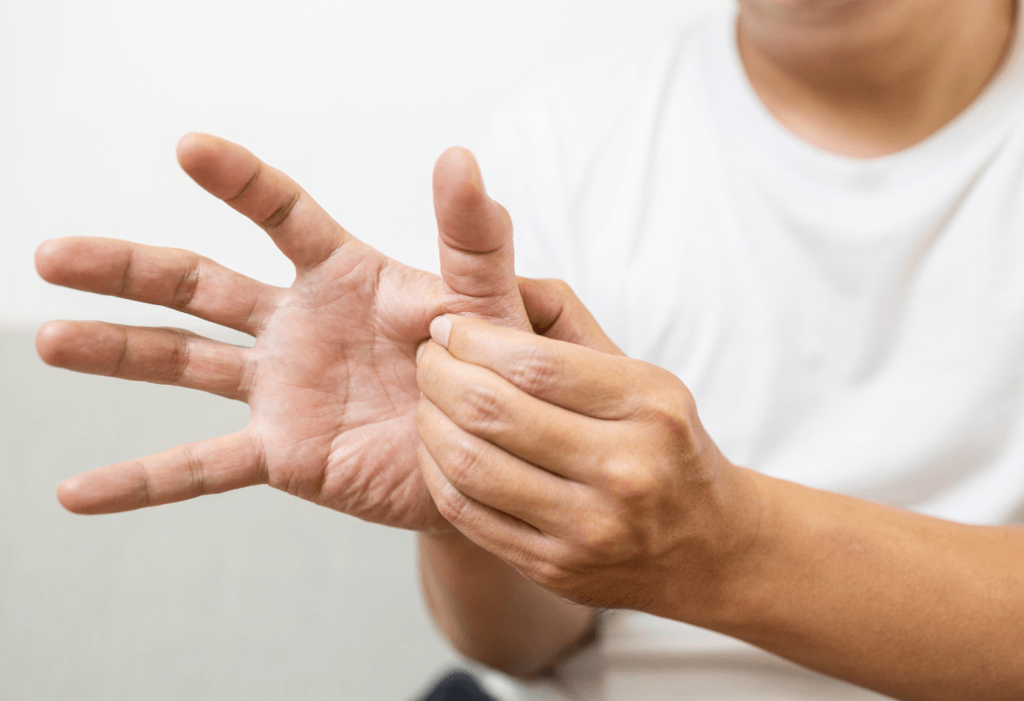Do you struggle with the shakes of essential tremor in your hands? You’re not alone. This article will show you exercises that can help control these tremors and improve your daily life.

Essential tremor is a prevalent movement disorder that is primarily characterized by involuntary and rhythmic shaking. This shaking is most often observed in the hands, making activities like writing, eating, or holding objects particularly challenging. However, the condition doesn’t just limit itself to the hands; it can also affect the arms, head, voice, and even the legs in some cases.
The exact cause of essential tremor is still a subject of ongoing research, though genetic factors are believed to play a significant role in many cases. Environmental factors and age-related changes may also contribute to its development.
Despite the uncertainty surrounding its origins, one thing is clear: managing symptoms is crucial for those affected. Regular exercise emerges as a key player in this management strategy. Engaging in specific exercises can significantly aid in enhancing muscle control, building strength, and improving overall body coordination. Additionally, exercise has been observed to have positive effects on neurological health, potentially reducing the severity and frequency of tremors.
Here, we discussed different exercises for essential tremor. By following these exercises, individuals with essential tremor can gain a greater sense of control over their movements and experience an improvement in their day-to-day functioning.
Hand and wrist exercises
Strengthening hand and wrist muscles can be particularly effective. Simple exercises include wrist curls using a lightweight or a can of soup; finger taps against a table surface to improve dexterity; and squeezing a soft ball to build grip strength. These exercises should be done gently, without straining and repeated regularly throughout the day for maximum benefit.
Arm and shoulder strengthening
Stronger arms and shoulders can help stabilize movements. Exercises like seated or standing shoulder presses, arm raises with light dumbbells, and gentle bicep curls can significantly contribute to muscle strength. It’s important to start with very light weights and focus on smooth, controlled movements to avoid aggravating the tremors.
Aerobic exercises
Regular aerobic exercise enhances cardiovascular health and overall muscle function. Walking at a steady pace, swimming, which offers natural resistance, or cycling on a stationary bike are excellent options. These activities not only improve blood circulation but also release endorphins, which can have a calming effect on the body.
Yoga and Tai Chi
Yoga and Tai Chi emphasize slow, deliberate movements and deep breathing, making them ideal for those with essential tremor. They improve balance, flexibility, and mental focus. Regular practice can help in reducing the severity of tremors, particularly those exacerbated by stress. Classes tailored for beginners or individuals with movement disorders are recommended.
Targeted stretching
Incorporating daily stretching routines helps alleviate muscle tension, a common aggravator of tremors. Focusing on the neck, shoulders, arms, and hands, these stretches should be gentle and held for 15-30 seconds. Consistent stretching can improve overall flexibility, reducing the rigidity that often accompanies essential tremor.
Balance and coordination drills
Improving balance and coordination is crucial. Simple exercises like standing on one leg, walking heel-to-toe in a straight line, or using a balance board can significantly improve stability. These exercises train the brain to control precise movements, which can be beneficial for those with tremors.
Incorporating exercise into daily life
Begin with short, manageable sessions, gradually building up as your comfort level increases. Consistency is crucial – even a few minutes daily can make a difference. It’s also important to find activities you enjoy, as this will encourage regular practice. Consulting with a physical therapist can provide tailored advice and ensure that exercises are performed correctly and safely.
Safety considerations
When exercising with essential tremor, safety is key. Ensure the exercise area is free of obstacles, use non-slip mats, and have a sturdy chair or handle for support. If using weights, secure them with a strap to avoid accidental dropping. It’s also wise to have a partner or caregiver present during exercises for added safety and assistance.
Conclusion
While essential tremor can be a challenging condition, incorporating regular exercise into your routine can significantly improve symptoms and quality of life. A combination of strength training, aerobic activity, and relaxation techniques can help you gain better control over your body. Remember, each individual’s experience with essential tremor is unique, so it’s important to consult healthcare professionals before starting any new exercise regimen. With patience, persistence, and the right exercises, you can take meaningful steps toward managing your tremors.